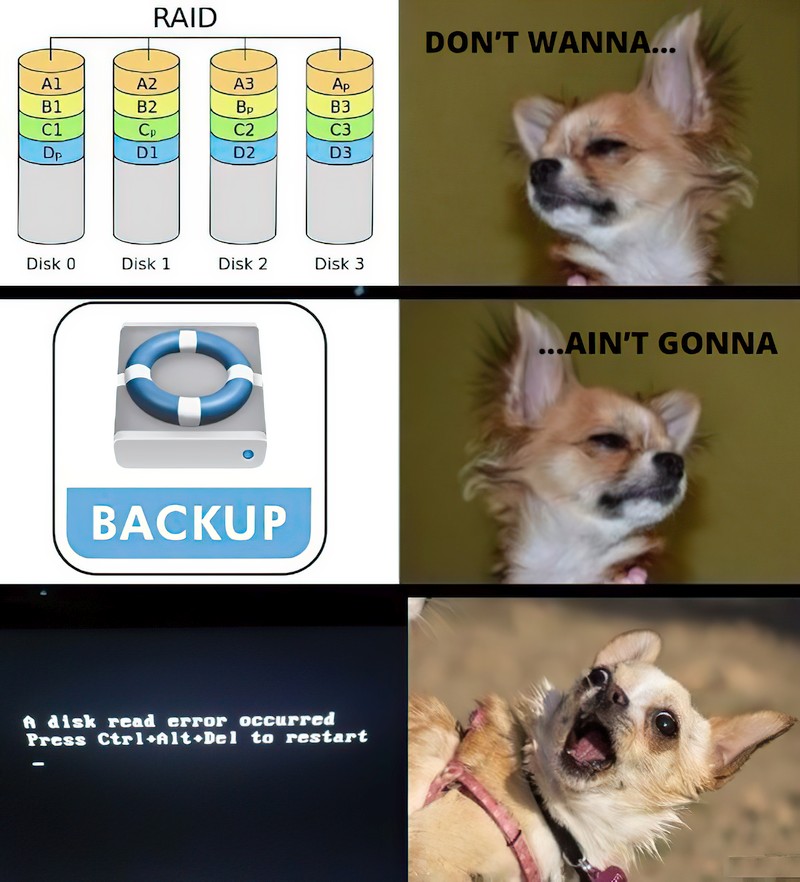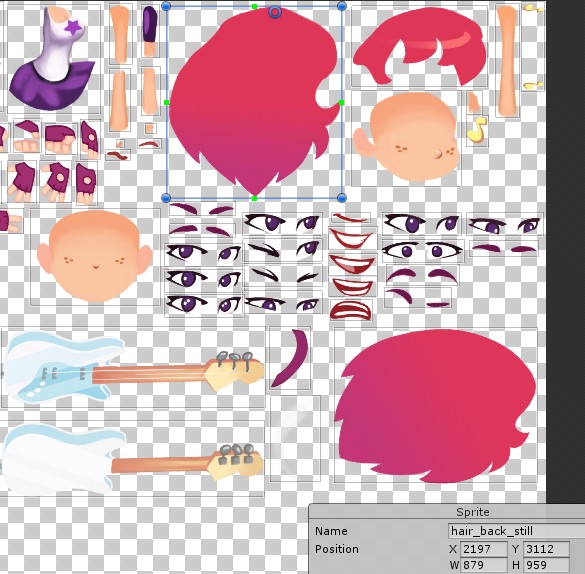All about VFX and CGI software (and more).
Backup and Restore a Live Linux System Using Snapshots. How to Install Linux Mint 20 on an LVM Partition
In my previous post on the topic of Backup and Restore I mostly focused on Windows use cases and only briefly touched upon backing up Linux and MacOS systems. This is because Windows users have access to the amazing file system snapshotting capabilities in the form of Volume Shadow Copy “by default”. As for MacOS – it comes bundled with its own backup management suite called Time Machine, so backups are possible out of the box in there as well.
As for Linux folk... It’s a bit more involved, but still perfectly possible to backup systems without any downtime. And to do this one would need to make sure their system is running off an LVM system partition.
Why LVM?
If you have no idea what LVM stands for (spoiler: it’s “Logical Volume Management”), I would suggest you first get up to speed with what LVM is and why one would want to use an LVM partition for system storage rather than a standard EXT4/XFS one.
Either way, if you want to have an ability to backup a live Linux system (like an "always on" server or a hypervisor), you need to make sure the OS is installed onto an LVM-enabled volume, which supports creation of Snapshots. In this example we’ll set up an installation for a system with an EFI System Partition for boot-loader management. If you’re planning to go with a legacy BIOS boot instead, just skip the EFI partition creation step. The process is very straightforward and only takes minutes to complete.

Linux Mint is my long-standing favorite among all distros, so I will be using it to guide you through the process. But the steps described here should be more or less identical for the majority of Linux distributions, especially Ubuntu Linux derivatives, which Mint certainly is. I will also assume you have basic understanding of Linux, storage systems and disk partitioning, otherwise you should certainly not follow the guide and get some more experience first.
Backup and Restore. Don't Delay! Secure Your Files With Freeware Backup Software Today
I have a lot of files...
And I bet you do too.
You probably also use your computers on a daily basis. Those are cool. But sometimes they crash or glitch. Get stolen or hacked. Or install Windows updates. Or die in a fire.
Together with all your files and memories.
Consequently, today I'd like to direct your attention to the topic of data backup.
"Wait. Isn't this a Computer Graphics blog?"
It sure is.
Still, part of getting any work done on a computer is making sure your files don't accidentally get lost. Whether you like it or not, unless you have someone else responsible for keeping your data safe, you should adhere to a certain form of a backup strategy on your own.
Unfortunately, lots of people overlook this topic, and end up losing sizable amounts of their labor.

If any of this sounds familiar, this post will present a couple of suggestions and tools. And most of those won't cost you a dime.
Otherwise, if you are already using some form of a backup solution to manage redundant copies of the files you're working on, you probably won't discover anything particularly new here.
This article is not meant as an all-encompassing guide, but rather a brief introduction. One without product placements, affiliate links or hidden ads. Just honest opinions based on personal knowledge and experience.
Looking for a Free Adobe Premiere Alternative? Meet Olive Video Editor!
My fellow pro and hobbyist video editors and geeks alike, our prayers have been heard!
Do you remember finding yourself in a situation where you needed to simply edit a couple of clips together regardless of the format they were in? And maybe add a soundtrack, a title or two along the way, as well as do some basic color correction or time warping on the source material?
Here's how it usually goes: you get an idea, either write it down or jump straight into your NLE and get ready to bring it to life.

But then you must be sure to have a full-fledged video editing app on the computer you have access to. And even if you do say, open up your Premiere, Final Cut or DaVinci Resolve, you'll quickly realize that professional NLEs are picky about the formats you need to provide your videos in. Then you find out that you need to transcode a clip or two, save some images in another format...
Now you're questioning this sudden wave of euphoria which came with the idea, and looking for reasons not to keep going and finally...
Nope. Not worth it. I'm outta here!

And that, my friends, is exactly how ideas DIE...
Quietly... In the corners of your mind... Overtaken by a barrage of complications and tedious procedures needed before you can actually get to working on the damn clip.
New Unity 2019 2D Sprite Rigging and Lighting Tools
With the latest 2019.1 update Unity team have seriously upgraded the 2D tool-set of the editor:
Seems like a lot of those tools were inspired by the Rayman Legends engine. Something I was drooling over 5 years ago, hoping one day Unity would implement some of those. And they finally did!
It really makes me all warm and fuzzy inside, remembering how most of those automated 2D tools and thingies were not available when I was working on Run and Rock-it Kristie in the freeware version of Unity 4 (which back then lacked even the Sprite packaging functionality!) and had to be either developed from scratch or achieved with some cool Asset Store stuff you would need to purchase and integrate into your product.

Oh, the tools... The tools...
IK and rigging with bone weighting? Check:
Manual sprite atlasing and set-up? Check (atlasing is vital for mesh batching and draw call reduction):

Sprite assembly and animation? Check:
Dynamic level-building tools? Check (via modded version of the Ferr2D asset):
Dynamic lighting? Check! — With up to 4 live vertex lights and camera-distance based light culling to make sure the game would run at stable 60 fps on iPhone 4 (heavily reliant on the amazing but now deprecated Core Framework asset by echoLogin):
It was... Fun!
You know what I also remember? I remember almost every day working on the game I felt excited and driven. It was FUN. Even when it was challenging to solve some technical issues (there were a lot of those, especially for a beginner) or work around Unity limitations or bugs, it felt truly rewarding and would give such a powerful motivation boost that I would continue working until the end.
Until the release.

But the "serious" CG movie stuff I'm doing now?.. Honestly? Meh. It's so slow and clunky compared to my previous game development experience. Everything needs to be either cached, or rendered... I'm also having some grave issues with hair simulation which I wasn't able to overcome for the last 6+ months, many operations in the "classic" world of 3D editors are still either single-threaded, unstable, or require some very specific knowledge or particular and elaborate set-up... It's almost no fun! No fun means much, much less motivation to continue.
It's a problem.

Therefore this July I will instead be checking out the latest Unity Engine and see whether most of what I'm doing right now could be ported into Unity. Starting with simulation and scene assembly and hopefully — ending up animating, rendering and applying post effects right within the Unity Editor where everything is real-time and fun! I miss the real-time aspect! Oh boy, do I miss the ability to tweak materials and see the more or less finalized render of the scene even during assembly. The ability to import assets and build "smart" prefabs (like Softimage Models, but with interactivity and intrinsic scene-aware scripting via MonoBehavior) e.t.c...
I miss you, Unity!
Reality Check. What Is NVIDIA RTX Technology? What Is DirectX DXR? Here's What They Can and Cannot Do
NVIDIA and its partners, as well as AAA-developers and game engine gurus like Epic Games, keep throwing their impressive demos at us at an accelerating rate.
These feature the recently announced real-time ray tracing tool-set of Microsoft DirectX 12 as well as the (claimed) performance benefits proposed by NVIDIA's proprietary RTX technology available in their Volta GPU lineup, which in theory should give the developers new tools for achieving never before seen realism in games and real-time visual applications.
There's a demo by the Epic team I found particularly impressive:
Looking at these beautiful images one can expect NVIDIA RTX and DirectX DXR to do more than they are actually capable of. Some might even think that the time has come when we can ray trace the whole scene in real-time and say good bye to the good old rasterization.
There's an excellent article available at PC Perspective you should definitely check out if you're interested in the current state of the technology and the relationship between Microsoft DirectX Raytracing and NVIDIA RTX, which without any explanation can be quite confusing, seeing how NVIDIA heavily focuses on the native hardware-accelerated tech which RTX is, whist Microsoft stresses out that DirecX DXR is an extension of an existing DX tool-set and compatible with all of the future certified DX12-capable graphics cards (since the world of computer graphics doesn't revolve solely around NVIDIA and its products, you know).
So here I am to quickly summarize what RTX and DXR are really capable of at the moment of writing and what they are good (and not so good) for.
Navie Effex Dynamics And Simulation Framework For Cinema4D Now Free
While the year 2018 may have started with a large meltdown for the rest of the world, we, the 3D folk are still getting some great news following my previous blog post. This time it's Effex by Navie (formerly DPit Nature Spirit) - a fast and robust Particles & Fluid Simulation framework for C4D which went free recently. Effex comes with lots of goodies including an excellent FLIP solver I think I'm in love with.
It can do lots of stuff. See for yourselves:
Anyway, just grab a copy from GitHub.
Although the fact that such great products go free makes me uneasy for some reason. Can't stop thinking about the developers. Hopefully they are ok and not doing this due to problems selling the product...
Mootzoid Plugins for Softimage, C4D, Maya and Modo Now Available For Free!
What an amazing NY2017 present from Mootzoid for all of Softimage/XSI zealots out there (and for Maya/C4D/Modo guys to some extent as well)!
Quoting Eric: "For the upcoming holidays I wanted to let you know that as of today all my plugins are available for free on my website www.mootzoid.com. Just download any plugin and you're ready to go without any license hassle and without making your wallet unhappy :)"

Plugins are available at Eric's website, as usual.
Can't wait to get my hands on the full versions of emFluid and emPolygonizer!
BTW, you know what makes Eric's plugins so special? Just a couple examples:
- They add complete OpenVDB support (read/write) inside Softimage! You can simulate fire and smoke whilst exporting frames to .VDB whilst having Redshift for example picking those frames to render. It's fast and it's reliable.
- emPolygonizer provides a powerful multithreaded mesher to use with any object, be it particles or just a bunch of meshes. I used a while ago to mesh hundreds of thousands of particles in my FleX Fluid Simulation studies and was thoroughly impressed. It is so, so much more powerful than XSI's native polygonizer.
Thank you, Eric!